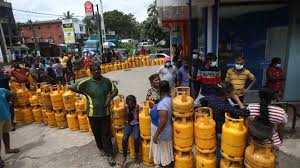A record number of developing countries are now in difficulty, according to traditional debt crisis indicators like collapsing currencies, 1,000 basis point bond spreads, and burnt foreign exchange reserves.
Rising borrowing prices, inflation, and debt all fuel concerns of an economic collapse, with the result that Lebanon, Sri Lanka, Russia, Suriname, and Zambia are already in default, Belarus is on the verge of default, and at least another dozen countries are in danger of default.
The total price is staggering. Analysts estimate that $400 billion of debt is at risk using 1,000 basis point bond spreads as a pain threshold. Argentina has by far the biggest, with over $150 billion, followed by Ecuador and Egypt, each with between $40 and $45 billion.
Crisis veterans believe that many can yet avoid default, particularly if global markets stabilize and the IMF steps in to offer assistance, but these are the countries that remain vulnerable.
ARGENTINA
The world leader in sovereign default appears certain to increase its total. In the illicit market, the peso currently trades at a near 50% discount, reserves are at an all-time low, and bonds are now worth 20 cents on the dollar, less than half of their post-2020 debt restructuring value.
Although the government won’t have much debt to pay off until 2024, it will start to pile up then, and there are growing fears that strong vice president Cristina Fernandez de Kirchner may try to force Argentina to break its commitment to the International Monetary Fund.
UKRAINE
Due to Russia’s invasion, major investors like Morgan Stanley and Amundi warn that Ukraine will almost surely need to restructure its $20 billion or more in debt.
The deadline is in September when bond payments totaling $1.2 billion are due. Kyiv may be able to make payments thanks to reserves and aid money. However, investors believe the government will follow suit in light of state-run Naftogaz’s request for a two-year debt freeze this week.
TUNISIA
Africa has a number of nations applying to the IMF, but Tunisia appears to be among the most vulnerable.
Due to President Kais Saied’s efforts to solidify his hold on power and the nation’s strong, intransigent labor union, the country has a budget deficit of almost ten percent, one of the highest public sector wage bills in the world, and there are worries that it may be difficult to secure, or at least adhere to, an IMF program.
The premium investors’ demand to purchase Tunisian debt over U.S. bonds has increased to almost 2,800 basis points, placing the country alongside El Salvador and Ukraine as Morgan Stanley’s top three most likely defaulters. According to Marouan Abassi, the head of Tunisia’s central bank, an agreement with the IMF is now necessary.
GHANA
Furious borrowing has led to a rise in Ghana’s debt to GDP ratio to almost 85%. It already spent more than half of tax income on debt interest payments, and its currency, the cedi, has lost about a quarter of its value this year. Additionally, inflation is going very close to 30%.
EGYPT
Egypt has a debt-to-GDP ratio of around 95% and has experienced one of the largest outflows of foreign funds this year, totaling $11 billion, according to JPMorgan.
Egypt is expected to have to pay $100 billion in hard currency debt over the next five years, including a sizable $3.3 billion bond in 2024, according to fund management company FIM Partners.
Cairo reduced the value of the pound by 15% and requested assistance from the IMF in March, but bond spreads have since risen to over 1,200 basis points, and credit default swaps (CDS), an instrument used by investors to manage risk, now factor in a 55 percent possibility that Cairo will default on a payment.
KENYA
Kenya spends almost 30% of its income on interest payments. Since it now lacks access to financing markets and has bonds worth over half a billion dollars that mature in 2024, this situation is problematic.
“These nations are the most susceptible solely because of the quantity of debt coming due relative to reserves, and the fiscal issues in terms of stabilizing debt burdens,” said Moody’s David Rogovic about Kenya, Egypt, Tunisia, and Ghana.
ETHIOPIA
One of the first nations to receive debt relief under the G20 Common Framework program will be Addis Ababa. Although the country’s prolonged civil war has slowed progress, it is nonetheless paying interest on its lone $1 billion international bond.
The Salvadoran
The possibility of making bitcoin legal tender was essentially eliminated. Trust levels have deteriorated to the point that an $800 million bond with a six-month maturity trades at a 30% discount and longer-term bonds at a 70% discount.
PAKISTAN
This week, Pakistan reached an important IMF agreement. The discovery could not have come at a better moment, as rising energy import costs are putting the nation in danger of experiencing a balance of payments crisis.
The country’s foreign exchange reserves have dwindled to only $9.8 billion, just enough for five weeks’ worth of imports. To record lows, the Pakistani rupee has declined. Since the incoming administration spends 40% of its revenue on interest payments, spending reductions are now urgently required.
BELARUS
After standing with Moscow in the Ukraine campaign, Belarus is now subject to the same harsh punishment as Russia, which was forced into default by Western sanctions last month.
ECUADOR
The Latin American nation only went into default two years ago, but violent protests and an effort to remove President Guillermo Lasso have plunged it back into turmoil.
It has a large amount of debt, and JPMorgan has increased its prediction for the public sector fiscal deficit to 2.4 percent of GDP this year and 2.1 percent next year as a result of the government subsidizing food and fuel. Spreads on bonds have surpassed 1,500 bps.
NIGERIA
Bond spreads are just over 1,000 bps, but Nigeria’s reserves, which have been gradually increasing since June, should comfortably meet the country’s next $500 million bond payment in a year. Nevertheless, it does spend close to 30% of tax income on debt interest.
Brett Diment, head of emerging market debt at investment firm abrdn, stated that “I think the market is overpricing a lot of these risks.”




















